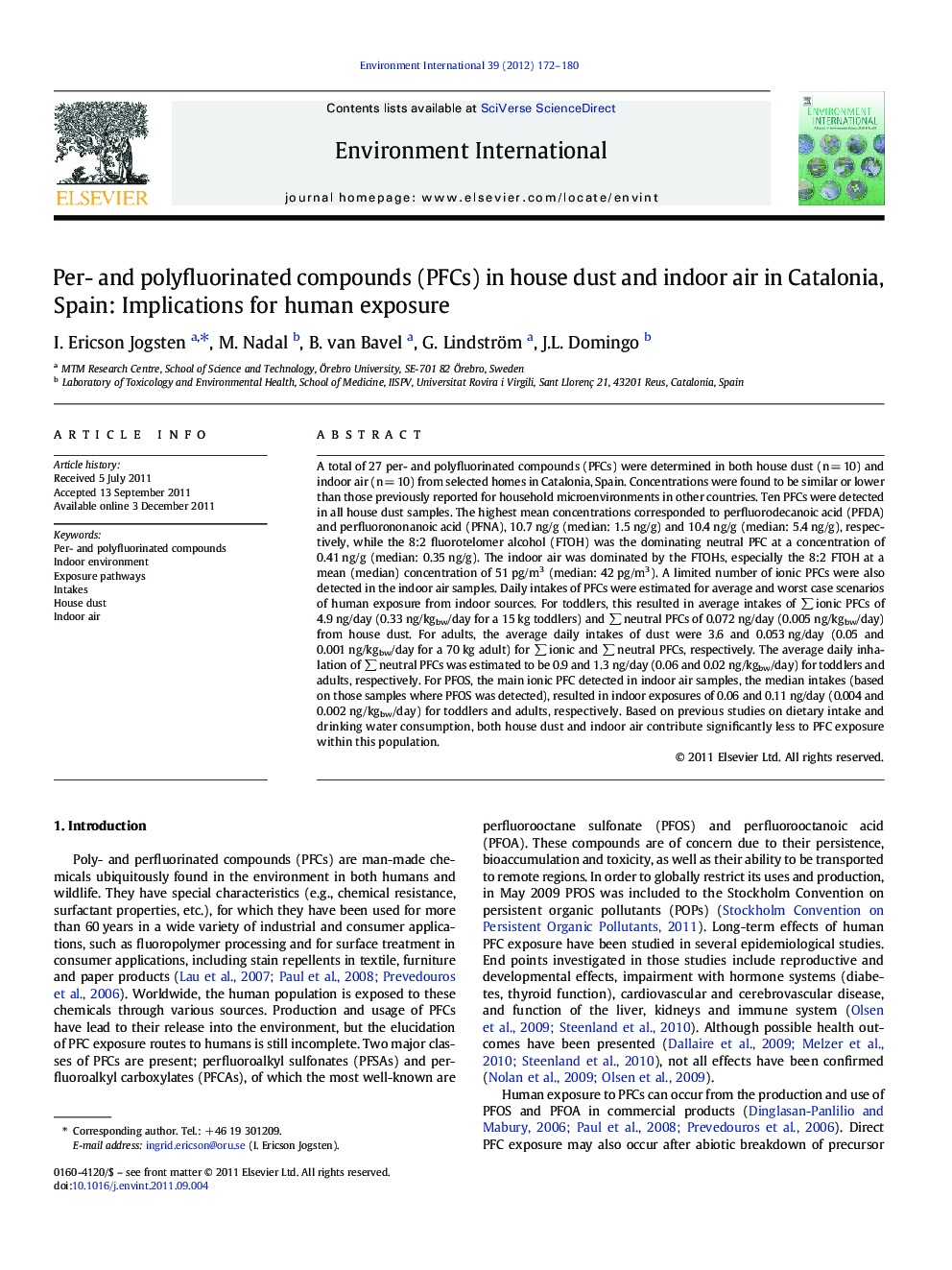| Article ID | Journal | Published Year | Pages | File Type |
|---|---|---|---|---|
| 4423148 | Environment International | 2012 | 9 Pages |
A total of 27 per- and polyfluorinated compounds (PFCs) were determined in both house dust (n = 10) and indoor air (n = 10) from selected homes in Catalonia, Spain. Concentrations were found to be similar or lower than those previously reported for household microenvironments in other countries. Ten PFCs were detected in all house dust samples. The highest mean concentrations corresponded to perfluorodecanoic acid (PFDA) and perfluorononanoic acid (PFNA), 10.7 ng/g (median: 1.5 ng/g) and 10.4 ng/g (median: 5.4 ng/g), respectively, while the 8:2 fluorotelomer alcohol (FTOH) was the dominating neutral PFC at a concentration of 0.41 ng/g (median: 0.35 ng/g). The indoor air was dominated by the FTOHs, especially the 8:2 FTOH at a mean (median) concentration of 51 pg/m3 (median: 42 pg/m3). A limited number of ionic PFCs were also detected in the indoor air samples. Daily intakes of PFCs were estimated for average and worst case scenarios of human exposure from indoor sources. For toddlers, this resulted in average intakes of ∑ ionic PFCs of 4.9 ng/day (0.33 ng/kgbw/day for a 15 kg toddlers) and ∑ neutral PFCs of 0.072 ng/day (0.005 ng/kgbw/day) from house dust. For adults, the average daily intakes of dust were 3.6 and 0.053 ng/day (0.05 and 0.001 ng/kgbw/day for a 70 kg adult) for ∑ ionic and ∑ neutral PFCs, respectively. The average daily inhalation of ∑ neutral PFCs was estimated to be 0.9 and 1.3 ng/day (0.06 and 0.02 ng/kgbw/day) for toddlers and adults, respectively. For PFOS, the main ionic PFC detected in indoor air samples, the median intakes (based on those samples where PFOS was detected), resulted in indoor exposures of 0.06 and 0.11 ng/day (0.004 and 0.002 ng/kgbw/day) for toddlers and adults, respectively. Based on previous studies on dietary intake and drinking water consumption, both house dust and indoor air contribute significantly less to PFC exposure within this population.
► A wide range of per- and polyfluorinated compounds (PFCs) were determined in both house dust and indoor air samples. ► Ionic PFCs were dominating in the house dust samples, although at lower concentrations than previously reported. ► For indoor air, the 8:2 telomer alcohol was the major compound detected. ► Daily intakes of PFCs were estimated for mean and worst case scenarios of human exposure from indoor sources. ► House dust and indoor air are of minor importance for the total exposure to PFCs compared to dietary intake.
